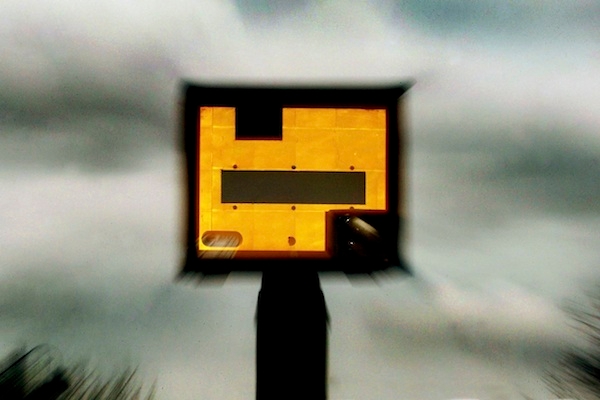I don’t want to defend Chris Huhne, I really don’t. Apart from anything else, I have always thought the country would be better off if all Oxford PPE graduates were simply imprisoned immediately, instead of the present inefficient system where we wait for them to commit a crime first. This would save us from being ruled by people who wanted to be politicians at the age of 17.
But no newspaper has yet pointed out that the speed camera which caught Chris Huhne was not just any old speed camera. From what I have found online it seems to have been the long-notorious ‘Site 050’ camera at the M11 at Chigwell, just beyond the point where the speed limit on the motorway drops from 70mph to 50.
The camera was installed in 2000. In 2003, the year of Huhne’s offence, it generated more revenue than any other speed camera in the country. Along with the MEP, it caught 9,638 other drivers that year, netting over £500,000 in fines. Despite this, figures showed that accidents at the spot had risen since its introduction. For accidents to rise after the installation of a speed camera is unusual. Nearly always accidents are shown to have fallen after a camera is introduced, and this fact is often used to trumpet their effectiveness. But the claim may rest on statistical sleight of hand. After a spate of accidents, a camera is installed and sure enough the accident rate falls. But you would expect the accident rate to fall independently — because of a phenomenon called ‘regression to the mean’. This makes evaluating the true effectiveness of cameras rather difficult.
There are also countless psychological experiments which suggest naive interventions such as speed cameras and seatbelts may simply lead to greater risk-taking elsewhere. Consider Wilde’s Theory of Homeostatic Risk, which suggests overall risk levels in motoring are unaffected by narrow interventions, since people may instinctively compensate for driving more slowly in one place by driving faster elsewhere. Similarly, people wearing seatbelts are known to respond unconsciously to their heightened sense of security by driving a little more aggressively, making innocent pedestrians and cyclists pay the price for their increased safety.
Huhne was driving at 69mph at 11:23p.m. in a newish car on what the photograph shows to have been an almost empty motorway. To have slowed from 80mph to 50mph in the space of a few hundred yards would have been hazardous to any drivers behind (one widely acknowledged problem with speed cameras is the erratic and unexpected braking they cause). To receive a driving ban for decelerating normally seems to me completely unreasonable.
It has always seemed odd to me that the civil liberties groups who complain endlessly about CCTV have been so reticent about speed cameras (unlike their counterparts in the United States, where the American Civil Liberties Union has actively campaigned against them). I am unsure about CCTV myself, but at least film footage requires human interpretation: the idea that fines and driving bans can be issued by a machine is a much more dangerous line to cross.
I am sure what Mr Huhne should have done was to challenge the legal basis for the camera. But have you ever tried to contest a speed camera fine? I did once, when I had accelerated on the A2 to avoid being hit by a swerving drunk. After a month lost in a bureaucratic nightmare of court summonses and unacknowledged letters, I took the points and the £60 fine.
If you offload penalty points onto your wife’s driving licence you are certainly perverting the course of something. But justice it isn’t.







Comments